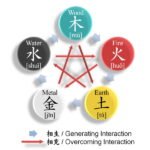
SHANGHAI – In the rain, lines of people snaked along Nanjing Dong Lu, Shanghai’s bustling shopping street, outside a Miniso shop, undeterred by a 20-minute wait to enter the shop, already packed with young adults eagerly rummaging through Disney and Sanrio merchandise in search of their favorite characters.
It wasn’t different in a Pop Mart store, the global toy sensation behind the wildly popular Labubu dolls, and at TopToy, another local hotspot for collectible figurines.
The scene stood in stark contrast to the nearly empty clothing shops in the prominent department stores along the same street, highlighting a shift in spending habits among Chinese millennials and Gen Z toward small indulgences amid a prolonged economic slowdown.
WORLDWIDE PHENOMENA
But this is happening worldwide, boding well for the global brand licensing market, which is forecast to jump to $533.9 billion by 2033 from $352.1 billion in 2024, according to Business Research Insights.
Thanks to the global craze for Labubu, a quirky and fuzzy monster character created by Hong Kong-born artist Kasing Lung, Pop Mart’s market capitalization surged past $40 billion, outpacing that of Hasbro Inc., the US toy giant founded in 1923.

Pop Mart, a Chinese collectibles retailer, exclusively sells Labubu dolls, and the soft toys have gone viral internationally after being worn by celebrities like Rihanna, Dua Lipa and Blackpink’s Lisa.
In South Korea, the “MZ generation,” a Korean term describing millennials and Gen Z, is also captivated by cute little figurine characters beyond Labubu.
Miniso has recently opened its third Korean store in Gangnam, an affluent area in Seoul, after opening each of its outlets in Daehak-ro in Jongno and Hongdae, the vibrant art and shopping districts.
The new shop immediately became one of the hottest places in the area.
Last month, Lotte Group, Korea’s retail-to-petrochemical conglomerate, hosted a Pokémon Town Festival that drew massive crowds.
Korea’s major theme park, Everland Resort, has also seen a surge in visitors thanks to a special event celebrating Sanrio characters such as Hello Kitty.
Their key-ring characters have become a popular fashion accessory among the younger generation in the country.

Buoyed by the growing popularity, Korea’s brand license market had expanded 5% on average every year to 13.6 trillion won ($10 billion) in 2024, according to the Korea Creative Content Agency.
Japan’s character market, backed by a long history of affection for beloved characters, is valued at 30 trillion won.
Inside Tokyo Station, visitors can spend hours exploring a special shopping street dedicated to popular characters from around the world, including homegrown icons like Pokémon, Hello Kitty, Rilakkuma and Studio Ghibli.
INTUITIVE FEELING THAN STORIES
Today’s younger generations’ fascination with characters is, however, rooted in something different from that of older generations.
Where children in the past embraced characters for their stories and personified qualities, today’s youth are more drawn to instant, intuitive appeals, like cute appearance, said experts.
This is how China has emerged as a global character powerhouse, driven by the rise of Labubu.

Younger generations also find joy in the act of purchasing itself, fueling the popularity of blind box items that may contain rare collectibles.
Industry observers and experts attributed the latest collectible character boom among millennials and Gen Z in Korea, China and Japan to the current economic condition.
LIPSTICK EFFECT
Mikey Mouse was born in 1929, just as the Great Depression hit the world, and the Marvel superhero series scored in huge popularity following the global financial meltdown in 2008.
And Japan’s animation and character industries thrived during the so-called Lost Decade, a period of slow to negative economic growth from 1990 to 2010.

Experts note that in times of financial strain, people often seek out inexpensive forms of escapism, such as movies and collectible characters.
“The global economy is going through a tough period, and China has also been grappling with a slowdown,” said Kim Dae-jong, a professor at the Business Administration department at Sejong University.
“Now we are witnessing the lipstick effect, as the MZ generation looks for small luxuries to find comfort during economic uncertainty.”
The lipstick effect is a theory that suggests consumers tend to purchase affordable luxury items, such as lipstick or other cosmetics, as a form of psychological comfort during economic downturns.
By Yun-Sang Ko and Solee Lee
kys@hankyung.com
Sookyung Seo edited this article.















